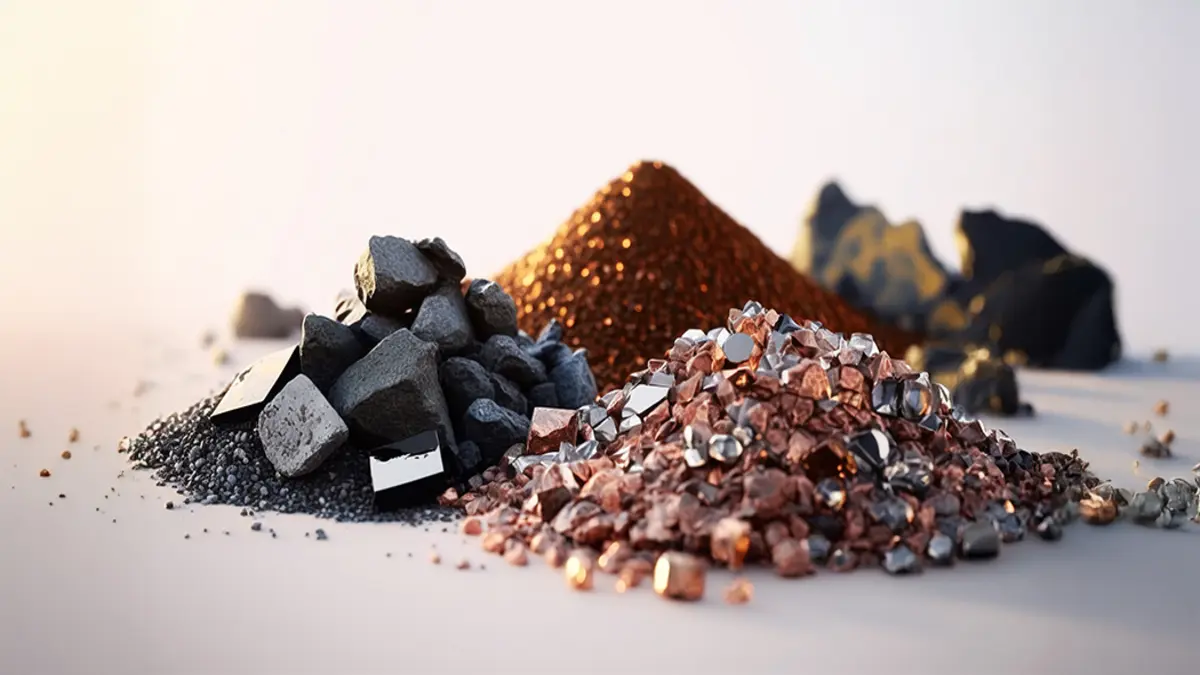Introduction
Rare earth elements (REEs) are the basis of the modern military-technology complex and the broader energy transition.
A set of 17 elements – plus associated important minerals such as gallium, germanium, graphite and antimony – feed permanent-magnet motors,
precision-guided munitions, AESA radars, electro-optical/infrared (EO/IR) systems, directed-energy platforms and electric propulsion systems in naval and land vehicles.
For more than a decade, China has maintained overwhelming advantages in mining, separation, metallurgy, alloying and magnet production.
That concentration of know-how and capability has translated into sustainable market advantages, policy instruments and – sometimes – explicit export controls that resonate through Western defence supply chains.^[1–4]
India and Australia have responded by weaving together complementary assets: Australia, with world-class deposits, project development experience and early-mover refining; India, with scale markets, emerging magnet ambitions and a push to secure state-led feedstock and mid-stream processing. This analysis examines the combined pressures: How each country is expanding mining; What concrete steps they are taking to add refining capacity; Who are the customers in the near future; Which specific minerals are most important for defence;
What a shortage would mean for Western forces; The global outlook for supply; and Which other countries are now moving in the same direction.
99.999% gallium crystals — Gallium, commonly used in compound forms such as gallium arsenide (GaAs) and gallium nitride (GaN), is a key component of modern military Electronics are a critical enabler. These compounds support high-performance semiconductor devices that power advanced radar systems, including the US Navy’s AN/SPY-6; electronic warfare suites for jamming, deception, and secure communications; missile guidance units for precision targeting; and satellite RF amplifiers. Ensure resilient space-based communications. Their combination of high-frequency operation, high-power handling, and exceptional thermal stability make them indispensable in active electronically scanned array (AESA) radars, electronic attack pods, and other mission-critical defense platforms.
1) China’s position – and why it matters to defense
Multiple authoritative sources converge on three facts: (i) China is a dominant refiner of most important minerals;
(ii) it produces a large proportion of rare-earth permanent magnets; and (iii) it exports when geopolitics demands it. It has not hesitated to tighten controls.^[1–5]
The International Energy Agency (IEA) estimates that China is the leading refiner for 19 of the 20 minerals it tracks, with an average refining market share of about 70 percent.^[1]
The U.S. Geological Survey (USGS) continues to document U.S. reliance on imported rare earth compounds and metals despite a comeback at Mountain Pass.^[2,6]
A Reuters analysis puts China’s share of rare-earth magnet production at about 90 percent, a sharp single-point-of-failure because the magnets are a finished intermediate used in everything from EVs to F-35 actuators.^[3]
Defense relevance
Permanent magnets (NdFeB and SmCo), heavy REE dopants (Dy, Tb), and yttrium and gadolinium for lasers and EO/IR dominate defense use cases.
Production delays for combat, missiles, sonar, and space payloads are the bottlenecks here. History is not fiction:
China halted rare earth exports to Japan in 2010, and has imposed successive restrictions on gallium, germanium, graphite, and selected rare earth products since 2023,
clearly citing national security.^[4,5]
2) India’s strategy: From geological mapping to magnets
India’s rare-earth strategy for 2024-2025 has sharpened around a state-led architecture that includes exploration, foreign acquisition, domestic isolation, and magnets.
Policy and institutions. New Delhi launched the National Critical Minerals Mission (NCMM)** in 2025 has launched, which has assigned nearly 1,200 exploration projects to the Geological Survey of India till FY2030-31
and provided financing and coordination support for public sector undertakings and private partners.^[7–9,15]
The Mines and Minerals (Development and Regulation) Amendment Act, 2023 removed six “nuclear” minerals – including lithium and niobium – from state-specific lists,
opened up exploration and mining to private players and enabled central auctions for deep-seated critical minerals.^[10,16]
A progressive supplementary legal push in 2025 will allow state funds to acquire overseas critical-mineral assets, formalising the long-suggested outbound strategy.^[13]
FAQs
Rare earths are used in radar, fighter jets, missiles, satellites, and naval ships. They also play a vital role in electric cars, wind turbines, and renewable energy storage. Without them, both modern defense systems and green technology cannot function smoothly.
India and Australia are joining forces to build a strong rare-earth supply chain. Australia has rich reserves and refining know-how, while India has growing demand and plans to develop magnet-making industries. Together, they aim to secure stable supplies without relying too heavily on China.
The shortage will slow down the production of advanced defense systems, electric vehicles, and consumer electronics. For the military, it could delay missiles, radar upgrades, and satellite launches. For everyday life, it could mean higher costs for EVs, smartphones, and renewable energy projects.
Gallium, graphite, and lithium are trending due to rising demand in EV batteries and high-tech defense systems. In 2025, after China banned the export of gallium and germanium, countries like India and Australia were prompted to accelerate their mining and refining projects.








Leave a Reply